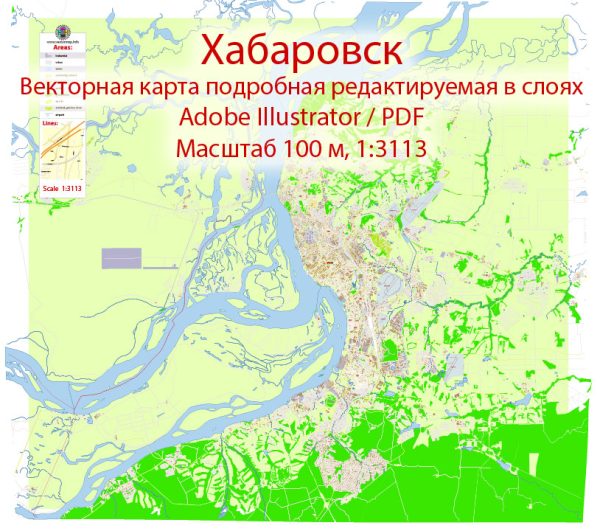Khabarovsk is a city in the Russian Far East, situated on the Amur River, near the border with China. The city has a rich history that reflects the broader historical and geopolitical developments in the region. Here’s an overview of the history of urban development in Khabarovsk:
- Foundation and Early Years (1858-1890s):
- Khabarovsk was founded in 1858 as a military post during the Amur Annexation, a period of Russian expansion into the Far East.
- The city’s strategic location along the Amur River played a crucial role in trade and defense.
- In the late 19th century, Khabarovsk saw the construction of important infrastructure, including the Trans-Siberian Railway, connecting it to the rest of Russia.
- Imperial Era (1900-1917):
- Khabarovsk continued to grow during the late Imperial era, with the development of industries and an influx of settlers.
- The city served as an administrative and economic center for the Russian Far East.
- Architectural styles of the time, influenced by Russian and European designs, left their mark on the city.
- Soviet Period (1917-1991):
- The October Revolution in 1917 brought about significant changes in Khabarovsk, with the establishment of Soviet power.
- The city played a role in the Russian Civil War, experiencing occupation by different factions.
- During World War II, Khabarovsk was far from the front lines but played a crucial role in supporting the war effort, hosting military and industrial facilities.
- The post-war period saw further industrialization and urbanization.
- Post-Soviet Era (1991-Present):
- The dissolution of the Soviet Union in 1991 had economic implications for Khabarovsk, affecting industries and infrastructure.
- Like many Russian cities, Khabarovsk faced challenges in adapting to a market economy.
- In the 21st century, the city has experienced economic growth, with renewed focus on trade and development.
- Modern Urban Development:
- Khabarovsk has seen modernization in terms of infrastructure, with new buildings, roads, and amenities.
- The city’s strategic location has made it an important hub for trade and cultural exchange with neighboring countries, especially China.
- Efforts have been made to preserve and showcase the historical architecture of Khabarovsk while adapting to contemporary needs.
- Cultural and Economic Significance:
- Khabarovsk serves as a cultural and economic center in the Russian Far East, with theaters, museums, and educational institutions.
- The city’s diverse population reflects its history as a melting pot of various ethnicities and cultures.
Overall, Khabarovsk’s history of urban development is intertwined with the broader historical narrative of the Russian Far East, shaped by geopolitical, economic, and cultural forces over the years.


 Author: Kirill Shrayber, Ph.D.
Author: Kirill Shrayber, Ph.D.